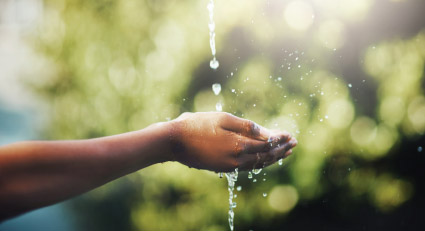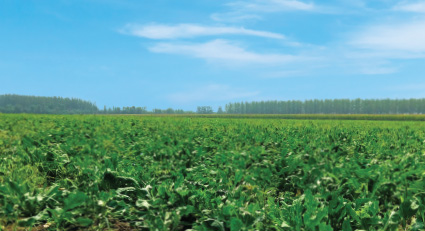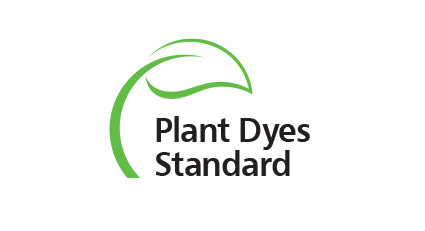The dyeing industry has a problem
There are many problems with current textile dyeing and treatment practices, and almost all of them are related to excess water consumption and pollution. Dyeing cotton is particularly water-intensive, as it is estimated that dyeing and finishing can use around 125 litres of water per kilogram of cotton fibres. Not only does dyeing require huge volumes of water, it also relies on huge amounts of energy to heat up water and steam that is necessary for the desired finish.

About 200,000 tons of dyes (worth 1 billion USD) are lost to effluent due to inefficient dyeing and finishing processes (Chequer et al., 2013). This means that current dyeing practices are not only wasteful of resources and money, but also release toxic chemicals into freshwater sources. 60 to 80 per cent of all dyes are AZO dyes, many of which are known to be carcinogenic. Chlorobenzenes are commonly used to dye polyester, and are toxic when inhaled or directly in contact with skin. Perfluorinated chemicals, formaldehydes and chlorinated paraffin are used in finishing processes to create waterproofing effects or flame retardance, or to create easy-care fabrics.

As the industry stands today, chemical suppliers are not required to provide all of the ingredients inside dyes. A 2016 report by KEMI found that nearly 30% of the chemicals used in textile manufacturing and dyeing were confidential. This lack of transparency means that chemical suppliers could potentially be using toxic substances into products that then pollute water sources during manufacturing and harm those who wear the finished garments.

We know that a large amount of potentially toxic chemicals are used to dye our clothing, but there’s a lack of knowledge and transparency about their properties in relation to human and environmental health. Inadequate knowledge about chemicals used is due to the fragmented and complex web of supply chains and distribution. 80% of textile supply chains exist outside of the United States and EU, making it difficult for governments to regulate the types of chemicals that are used in garments sold domestically.
As more consumers become aware of the harmful effects of current dyeing practices, new technologies make way for more cost-effective, resource-efficient and sustainable dyeing alternatives. Innovation in dyeing technologies ranges from pre-treatment of cotton, pressurized CO2 dye application, and even creating natural pigments from microbes. Current dyeing innovations can help reduce water usage, replace wasteful practices with efficient and cost-effective ones and attempt to completely transform the way in which we create the pigments that give our clothing the beautiful colours we love.
Waterless technologies for sustainable dyeing
The dyeing process of textiles varies depending on the type of fabric. Cotton dyeing is a longer and more water and heat-intensive process, due to the negative surface of cotton fibres. This means that usually cotton only takes up about 75% of the dye that is used. In order to make sure colour holds, dyed fabric or yarn is washed and heated over and over again, producing huge amounts of wastewater. ColorZen uses a patented technology that pre-treats cotton before it is spun. This pretreatment makes the dyeing process faster, reduces 90% of water usage, 75% less energy and 90% less chemicals that would otherwise be needed for effective dyeing of cotton.
Dyeing synthetic fibres, such as polyester, is a shorter process and 99% or more dye fixation (99% of the dye that is applied is taken up by the fabric). However, this does not mean that current dyeing practices are more sustainable. AirDye uses dispersed dyes that are applied to a paper carrier. With heat alone, AirDye transfers dye from the paper to the textile’s surface. This high heat process colours the dye at a molecular level. The paper that is used can be recycled, and 90% less water is used. Also, 85% less energy is used because the textiles do not need to be soaked in water and heat dried over and over.
DyeCoo uses CO₂ to dye textiles in a closed-loop process. “When pressurized, CO₂ becomes supercritical (SC-CO₂). In this state CO₂ has a very high solvent power, allowing the dye to dissolve easily. Thanks to the high permeability, the dyes are transported easily and deeply into fibres, creating vibrant colours.” DyeCoo does not require any water, and they use pure dyes with 98% uptake. Their process avoids excess dyes with harsh chemicals and no wastewater is created during the process. They have been able to scale up this technology and have commercial endorsements from both textile mills and end-users.
Pigments from microbes
Most of the clothing we wear today is coloured using synthetic dyes. The problem with these is that valuable raw materials, such as crude oil are needed during production and the chemicals added are toxic to the environment and our bodies. Even though natural dyes are less toxic than synthetic dyes, they still require agricultural land and pesticides for the plants that made up the dyes.
Labs across the world are discovering a new way to create colour for our clothing: bacteria. Streptomyces coelicolor is a microbe that naturally changes colour based on the pH of the medium it grows inside. By changing its environment, it is possible to control what type of colour it becomes. The process of dyeing with bacteria begins by autoclaving a textile to prevent contamination, then pouring a liquid medium filled with bacterial nutrients over the textile in a container. Then, the soaked textile is exposed to bacteria and is left in a climate-controlled chamber for a couple of days. The bacteria is “live dyeing” the material, meaning that as the bacteria grows, it is dyeing the textile. The textile is rinsed and gently laundered to wash out the smell of the bacterial medium, then let to dry. Bacterial dyes use less water than conventional dyes, and can be used to dye many different patterns with a vast range of colours.
Faber Future, a UK-based lab, is using synthetic biology to program the bacteria to create a large range of colours that can be used to colour both synthetic and natural fibres (including cotton).
Living Colour is a biodesign project based in the Netherlands that is also exploring the possibilities of using pigment-producing bacteria to colour our clothes. In 2020, Living Colour and PUMA teamed up to create the first-ever bacterial dyed sports collection.
Sustainable dyeing startups in our ecosystem
Plug and Play actively searches for new technologies that help to drive much-needed change within the dyeing industry. We connect innovative startups with our broad network of corporate partners, mentors, and investors.
Take a look at some of our favourite ones:
Werewool is taking inspiration from nature to produce colourful textiles that come from proteins. One of these proteins is from Discosoma Coral which produces a bright pink colour. The DNA of this protein can be copied and placed into bacteria. This bacteria can then be woven into a fibre to make coloured fabric.
We aRe SpinDye dyes recycled materials from post-consumer water bottles or wasted clothing before they are spun into yarn. Their technology melts colour pigments and recycled polyester together without the use of water, which reduces overall water usage by 75%. In recent news, H&M has used We aRe SpinDye®’s dyeing process in their Conscious Exclusive collection.
huue. makes sustainable, biosynthetic indigo blue meant for the denim industry. Their technology does not use petroleum, cyanide, formaldehyde or reducing agents. This eliminates massive amounts of water pollution. Instead of using toxic chemicals, huue. uses sugar to make dye. They use proprietary bioengineering technology to create microbes that mirror nature’s process and consume sugar to enzymatically produce dye.
We still have work to do
In order for the mentioned startups and technologies to thrive and scale up to a commercial level, it is imperative that we drive investments and partnerships between these smaller companies, and larger existing fashion and chemicals companies.
It is impossible for new technologies to become economically viable options that fashion brands will adopt without investment and partnerships. The collaborations between Living Colour and PUMA, or SpinDye® and H&M are just two of the many necessary alliances that must continue if companies are genuinely committed to shifting towards sustainable dyeing practices that save precious resources and stop polluting the environment.
Post time: Mar-14-2022


